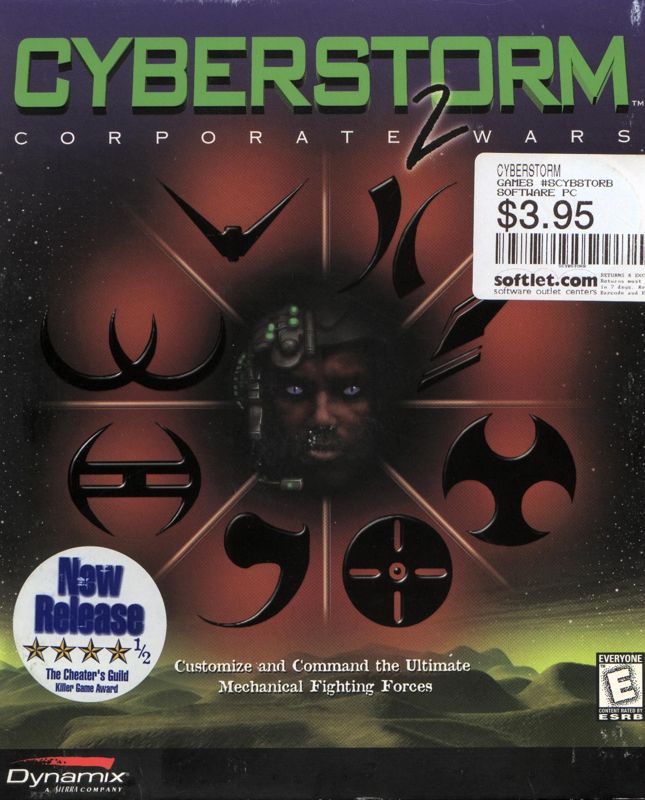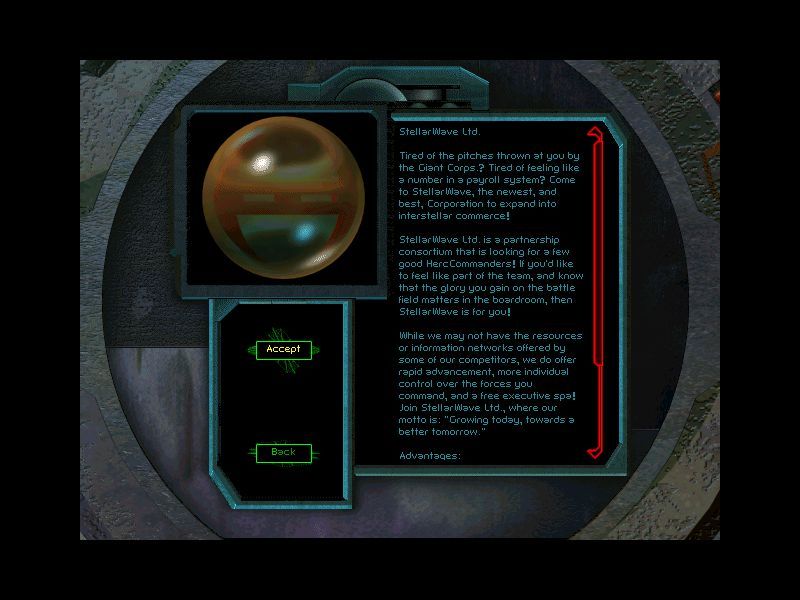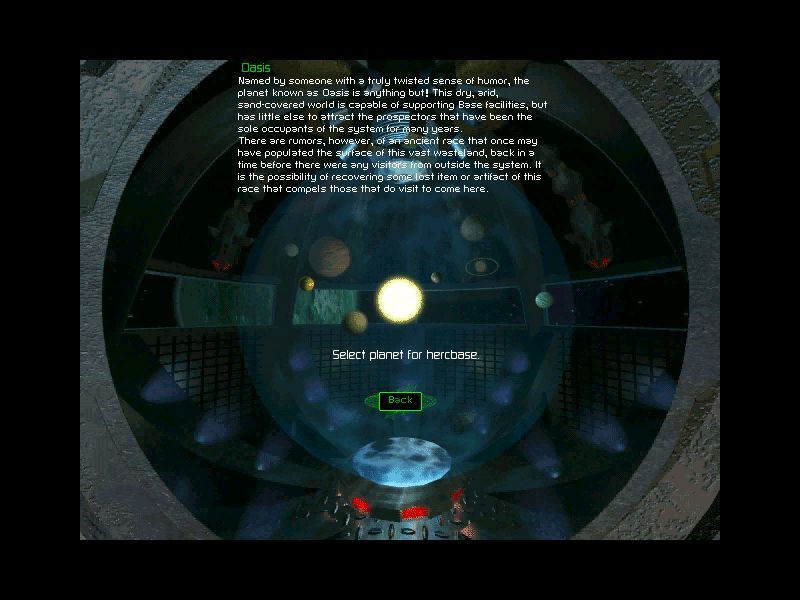Retro Replay Review
Gameplay
Cyberstorm 2: Corporate Wars delivers a rich tactical experience that builds on the strengths of its predecessor. Players choose from eight distinct corporations, each with its own specializations, strengths and weaknesses. This selection immediately influences your strategic approach—whether you favor heavy firepower, advanced electronics or nimble support units, there’s a corporate lineage to match your style.
(HEY YOU!! We hope you enjoy! We try not to run ads. So basically, this is a very expensive hobby running this site. Please consider joining us for updates, forums, and more. Network w/ us to make some cash or friends while retro gaming, and you can win some free retro games for posting. Okay, carry on 👍)
The core combat is presented in a top-down semi-isometric view that keeps the battlefield clear and easy to navigate. In traditional turn-based mode, every decision matters: you’ll plan movement, manage heat dissipation and target priority in carefully measured steps. For those craving a faster pace, the optional real-time overlay transforms the same mechanics into a dynamic, almost arcade-like affair without sacrificing depth.
Beyond unit control, customization is king. Dozens of HERCs (heavy mechanized combat rigs) and vehicles can be outfitted with laser arrays, missile pods, nanofiber armor and more. Experimenting with component synergies—swapping jump jets for extra coolant, or mixing sniper systems with point defense—is hugely rewarding. The balance between kit optimization and battlefield improvisation keeps each engagement feeling fresh.
Resource management and mission planning layer an additional strategic dimension. Between contracts, you’ll invest credits in new parts or salvage enemy tech to stay competitive. Deciding which missions to accept, and when to upgrade versus repair, becomes a game of economic warfare, reflecting the corporate rivalry at the game’s core.
Graphics
Visually, Cyberstorm 2 embraces a late-90s/early-00s aesthetic, marrying detailed sprites with pre-rendered backgrounds. Though it doesn’t rival modern 3D engines, the game’s art style remains surprisingly charming. Terrain features—rubble-strewn cityscapes, arctic wastelands and industrial complexes—are all distinct, helping you quickly assess cover and line-of-sight.
Unit animations feel solid, with HERCs swiveling turrets and energy pulses crisply rendered. Explosions and weapon effects pack a punch, lending a satisfying weight to each shot. Even subtle details, like smoke trailing from an overtaxed engine, communicate the tension of prolonged firefights.
On higher resolutions, the UI scales reasonably, keeping text legible and stats accessible. Menus are straightforward, though some icons feel a bit small by today’s standards. Thankfully, tooltips clearly explain weapon stats, heat generation and movement ranges, ensuring you never have to guess what a component does.
Color palettes shift appropriately across environments—icy blues for tundra missions, orange glows for molten factory floors—enhancing immersion without overwhelming the eyes. The overall presentation respects its tactical roots, prioritizing clarity over flashy gimmicks.
Story
Cyberstorm 2 doesn’t deliver a sprawling cinematic narrative but instead unfolds its drama through corporate politics and mission briefings. The game casts you as a mercenary commander contracted by one of eight mega-enterprises, each vying for dominance in a hostile frontier. This competitive framing turns every victory into a stepping stone for your chosen faction’s rise.
Dialogue is functional and focused, offering just enough flavor to ground your objectives. You’ll receive communications from corporate executives, battlefield analysts and rival commanders—each adding a touch of intrigue. While character development is minimal, the shifting allegiances and power plays keep you invested in the larger war economy.
Mission variety also contributes to the story’s momentum. Escort operations, base assaults and extraction runs all play into the theme of corporate brinkmanship. Optional side contracts can reveal hidden agendas or unlock prototype gear, rewarding players who dive deeper into the game’s lore.
Though there’s no bombastic plot twist or sprawling cutscene sequence, the emergent narrative generated by your victories and losses feels authentic. In Cyberstorm 2’s universe, success is measured in credit gains and territorial control—an arcade of corporate warfare that never pretends to be a Hollywood blockbuster.
Overall Experience
Cyberstorm 2: Corporate Wars strikes a fine balance between accessibility and depth. Its hybrid turn-based/real-time option caters to both methodical strategists and action-oriented players. Unit customization is extensive, mission structures are varied, and corporate rivalries provide a consistent thematic hook.
The game’s visual and interface design, while grounded in an earlier era, still accomplishes exactly what’s needed: clear combat resolution, informative stats and environments that aid tactical decision-making. Modern conveniences such as scalable UI and helpful tooltips mitigate any dated elements.
If you’re looking for a grand narrative epic, this title might feel light on story beats. But if you prize emergent storytelling born of strategic triumphs and mercenary exploits, Cyberstorm 2 delivers in spades. The satisfaction of crafting the perfect HERC loadout, then executing a flawless takedown, never grows old.
In summary, Cyberstorm 2: Corporate Wars is a compelling package for strategy fans who appreciate nuance, customization and the thrill of corporate conquest. Its focused scope and solid mechanics ensure that each campaign feels meaningful—and every victory rings loudest in the boardrooms of the galaxy’s most ruthless corporations.
 Retro Replay Retro Replay gaming reviews, news, emulation, geek stuff and more!
Retro Replay Retro Replay gaming reviews, news, emulation, geek stuff and more!









Reviews
There are no reviews yet.